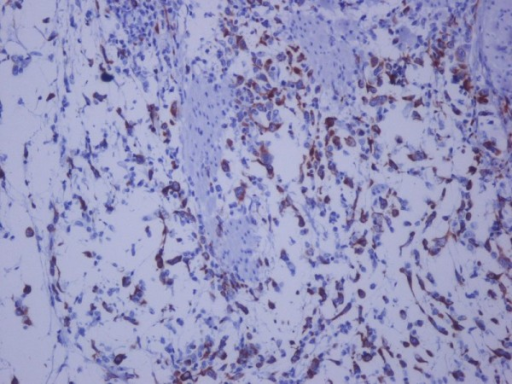Diagnosing Bladder Cancer May Be As Easy As Recognizing Its Smell

If we could spot cancer by smelling it, it could be detected much earlier in a less invasive way. Although cancer has no odors the human nose can smell, researchers have built a device that can sense odors in patients' urine, giving promise to an easier way of testing for bladder cancer.
Previous research has shown that dogs could be trained to recognize scents in gases emitted from urine, which may indicate cancer. So researchers built a device called "the Odoreader" that works similarly, by using a sensor to detect these scents.
"It is thought that dogs can smell cancer, but this is obviously not a practical way for hospitals to diagnose the disease," Professor Norman Ratcliffe, from the Institute of Biosensor Technology at the University of the West of England (UWE), said. "Taking this principle, however, we have developed a device that can give us a profile of the odor in urine. It reads the gases that chemicals in the urine can give off when the sample is heated."
Taking only 30 minutes to test the urine, the Odoreader can determine whether a patient has bladder cancer. The researchers developed the Odoreader using 98 samples of urine, and then tested it on 24 patients known to have cancer and 74 samples that had urological symptoms, but no cancer. Remarkably, it tested with 100 percent accuracy.
"Bladder cancer is said to be the most expensive cancer to treat, due to repeated scopes to inspect the development of the cancer cells in the bladder," Professor Chris Probert, from the University of Liverpool's Institute of Translational Medicine, said. "Odoreader has the potential to dramatically cut these costs by preventing scopes."
The National Cancer Institute estimates that 2013 will bring 72,570 new cases of bladder cancer and 15,210 related deaths. Most bladder cancers are transitional cell carcinomas, a cancer that begins in cells that make up the inner lining of the bladder. But other forms include squamous cell carcinoma, which begins in thin, flat cells, and adenocarcinoma, which begins in cells that make and release mucus and other fluids.
The researchers expect to test the Odoreader further before it can be used in hospitals, but they say that "these results are very encouraging for the development of new diagnostic tools for bladder cancer."
The Odoreader is the second cost-effective way of detecting cancer to be announced in the past week. Published in the journal Nature Medicine last week, researchers were able to detect cancerous tumors using sugar.
"We can detect cancer using the same sugar content found in half a standard sized chocolate bar," Professor Mark Lythgoe, senior author of the study and the director of the Centre for Advanced Biomedical Imaging at the University College London, said. "Our research reveals a useful and cost-effective method for imaging cancers using MRI — a standard imaging technology available in many large hospitals."
With the knowledge that cancer needs larger amounts of sugar than normal cells to grow, the MRI is able to spot micro-fluctuations in magnetic energy that occur when the sugar is consumed. They tested this technique, called "glucoCEST," on mice with two types of colon cancer, and it was able to distinguish between them.
An added benefit to glucoCEST is that it can be used safely on pregnant women and children, who may not be able to undergo standard testing methods because of radioactive materials. In addition, glucoCEST could be more widely available in places without costly imaging machines.
"In the future, patients could potentially be scanned in local hospitals, rather than being referred to specialist medical centers," Lythgoe said.
Source: Walker-Samuel S, Ramasawmy R, Torrealdea F et al. In vivo imaging of glucose uptake and metabolism in tumors. Nature Medicine. 2013.



























